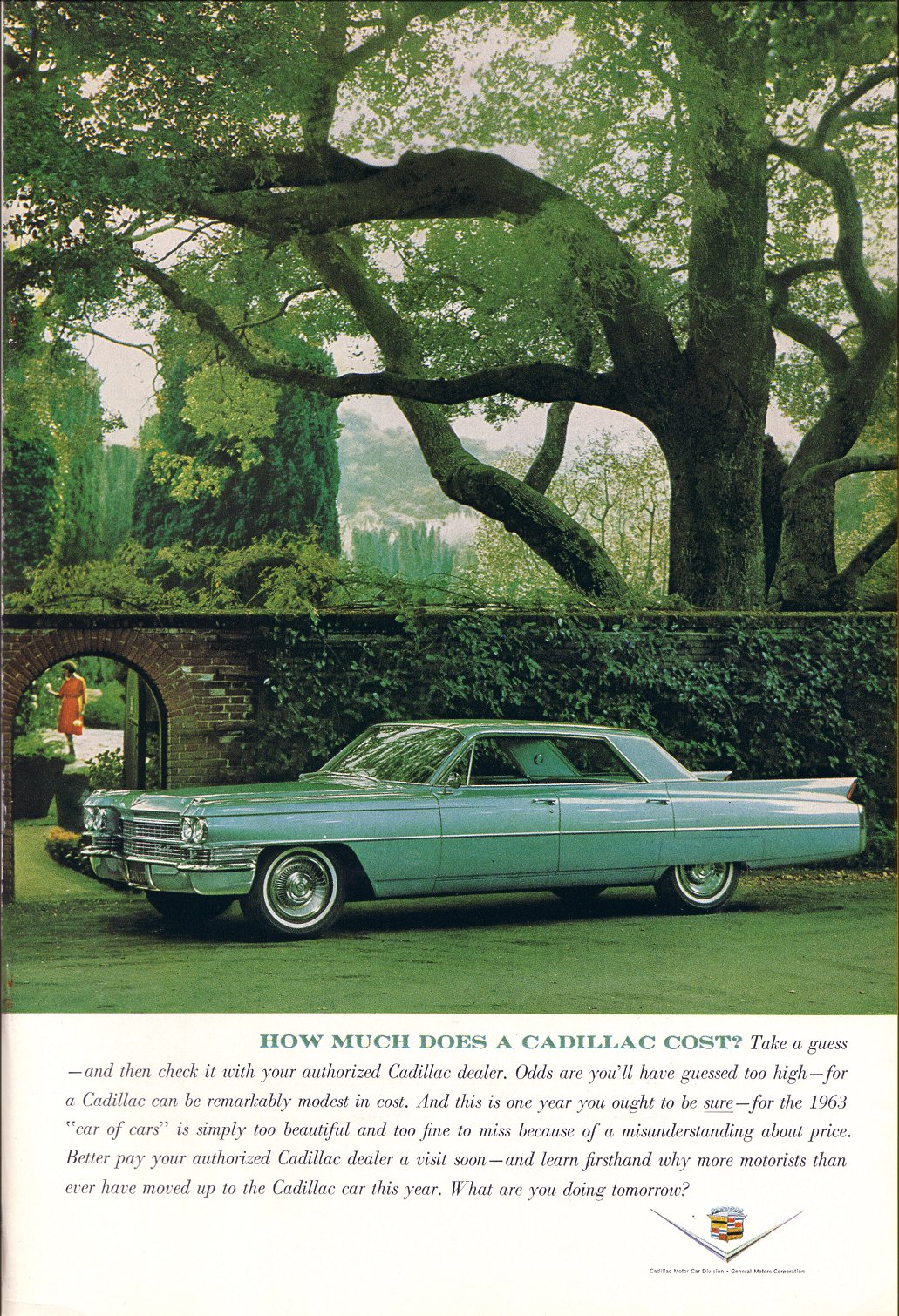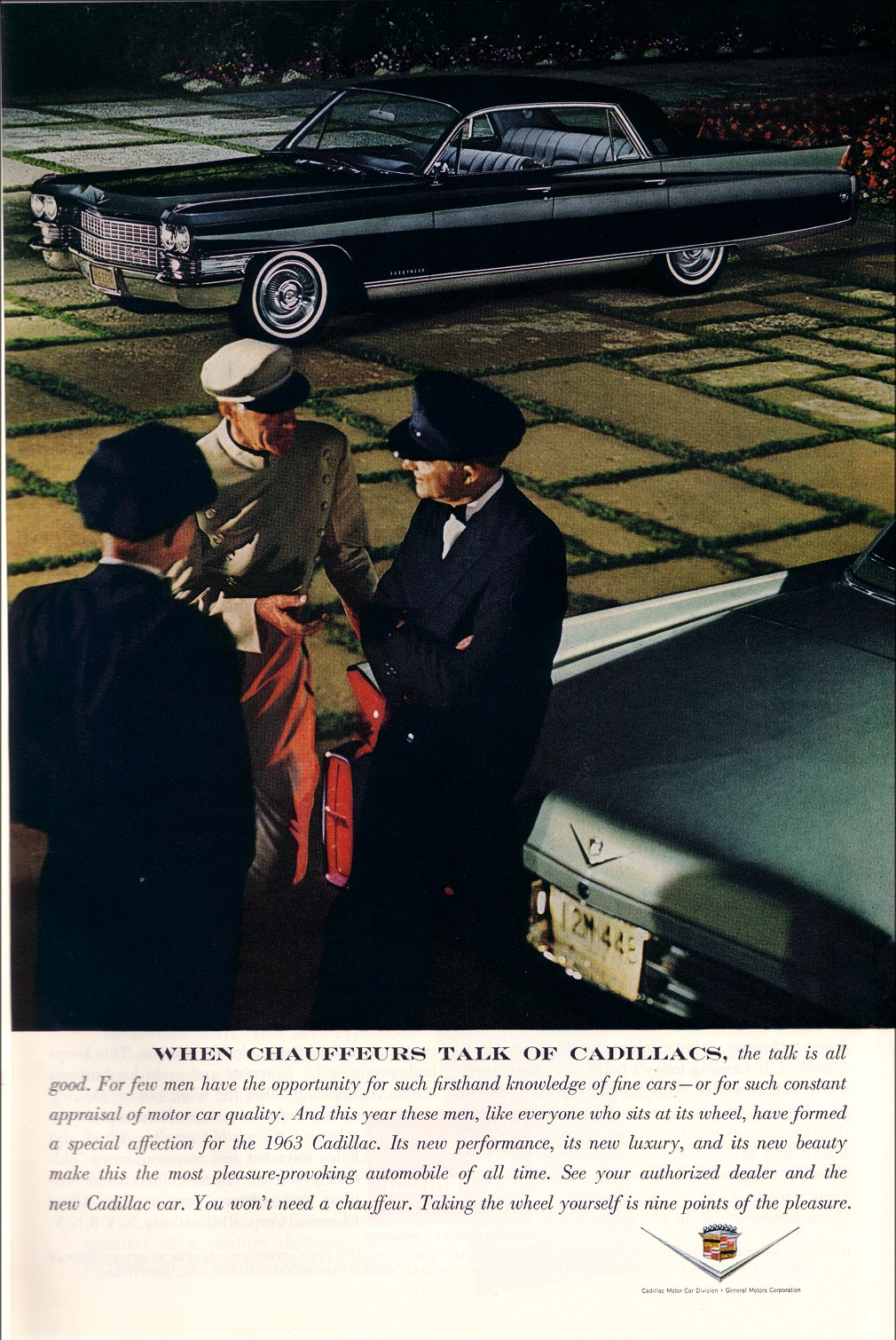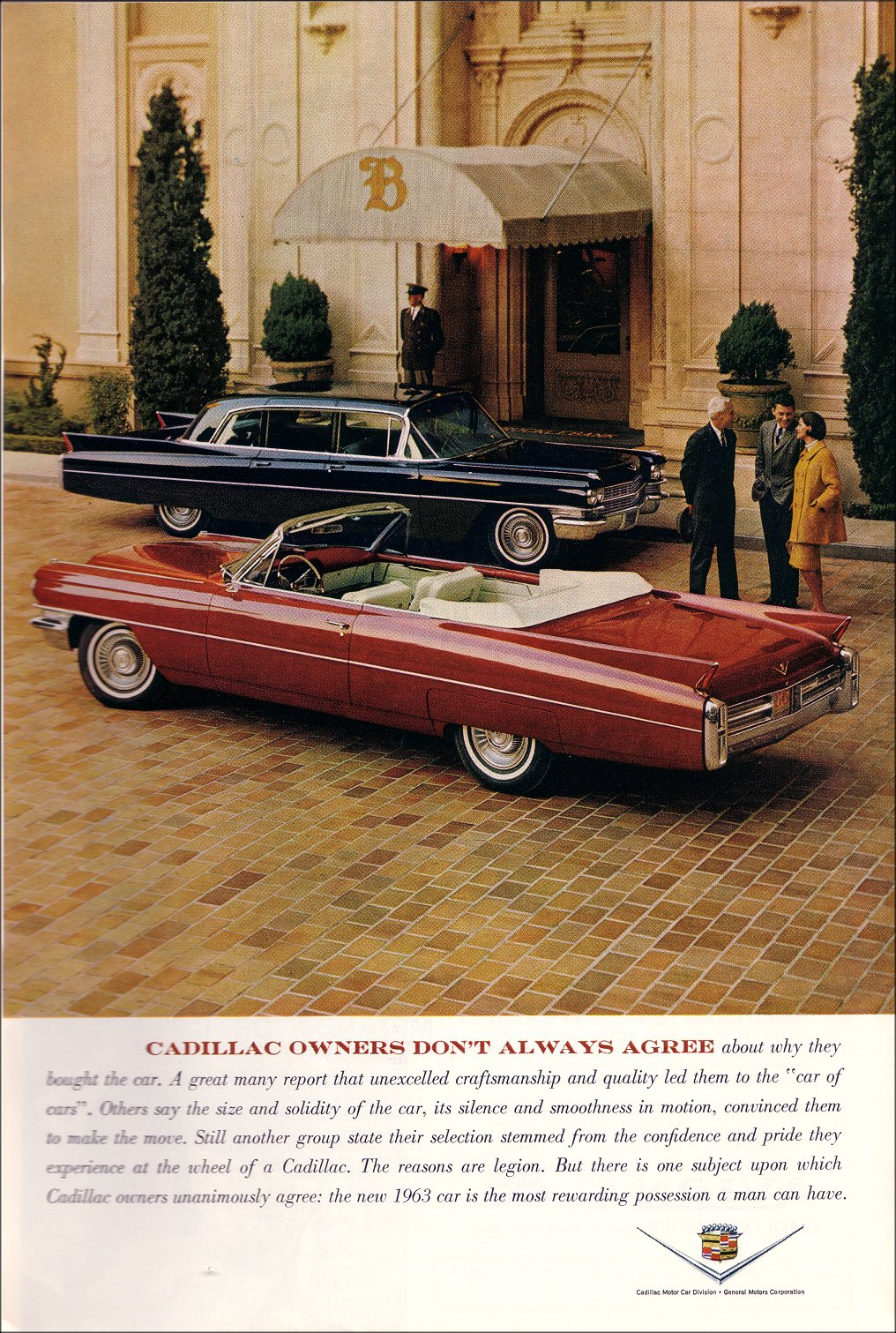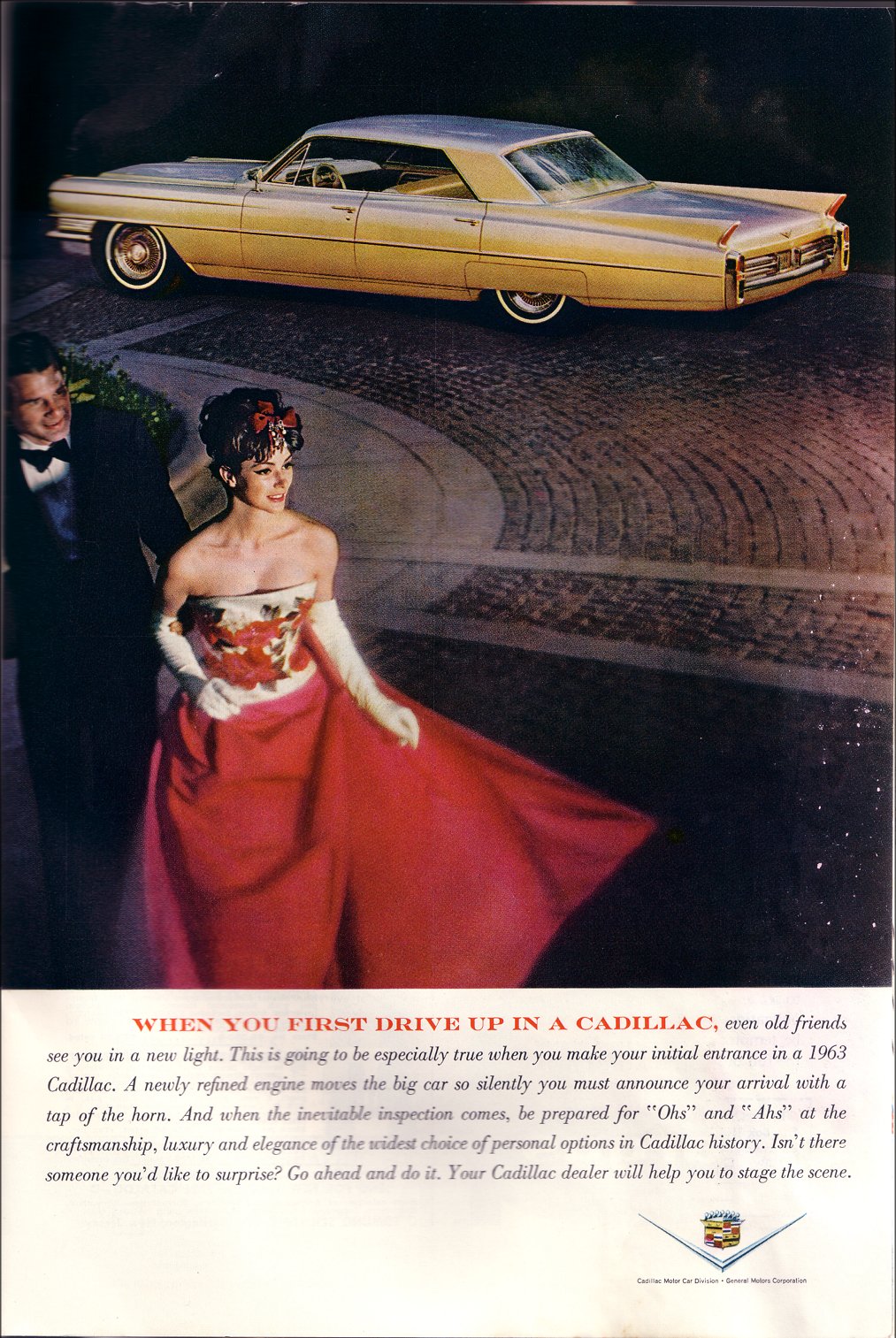Class is usually a more subtle dimension of ads than race or gender. I think, and I admit I am speculating here, that it is because there is a need to, usually, appeal to the masses while at the same time suggesting that the masses do or should have access to the most high-class things (which they do not). Thus, the difference between being middle-class and upper-class is minimized at the same time that the symbolic attainment (only) of upper-class-ness is being sold to middle-class people. There are exceptions, of course, such as when ads aimed at the upper-class sell product by suggesting that a middle-class person could never afford it.
Anyway, these ads, found here, are from 1962 and 1963. I thought they were interesting because of the way they communicated wealth and luxury, mostly with location.
Notice the very old giant trees, ivy-covered ancient-looking stone, an archway, and hedges… all in what looks like a private residence. The copy, which suggests that I’m right about “symbolic attainment,” begins:
How much does a Cadillac cost? Take a guess–and then check with your authorized Cadillac dealer. Odds are you’ll have guessed too high–for a Cadillac can be remarkably modest in cost.

There is a beautiful woman in the expensive-looking dress, of course, but also notice the cobble-stone circular driveway under her feet:
The chauffer communicates a certain degree of wealth, of course, but also the stone driveway decorated with greenery:

Cobblestones, again, and a very expensive New York City apartment building. Copy includes the following comment:
“…the new 1983 car is the most rewarding possession a man can have.”

Thanks to Jason for the link!


Comments 3
Ben Ostrowsky — June 25, 2008
If the greenery is the stuff between the paving stones, that's not decorative. That's for drainage. I did see flowering plants in the background, though to me that's not a class marker. (I bet that marks MY class, though.)
Lisa Wade, PhD — June 26, 2008
Ben,
I think it just marked mine!
Lisa
Old Wealth vs. New Wealth in Smirnoff Viral Videos » Sociological Images — November 25, 2009
[...] the working class at Honfest, evoking class with literary references, upper-class luxury in ads, communicating class in Cadillac ads, “class is forever“, and old money is old-fashioned. 10 Comments Tags: [...]